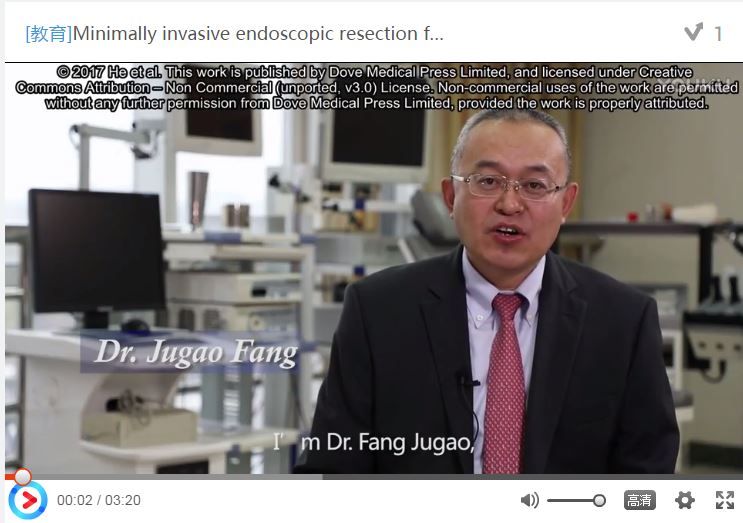9 0 6 7 6
论文已发表
注册即可获取德孚的最新动态
IF 收录期刊
- 2.6 Breast Cancer (Dove Med Press)
- 3.9 Clin Epidemiol
- 3.3 Cancer Manag Res
- 3.9 Infect Drug Resist
- 3.6 Clin Interv Aging
- 4.8 Drug Des Dev Ther
- 2.8 Int J Chronic Obstr
- 8.0 Int J Nanomed
- 2.3 Int J Women's Health
- 3.2 Neuropsych Dis Treat
- 4.0 OncoTargets Ther
- 2.2 Patient Prefer Adher
- 2.8 Ther Clin Risk Manag
- 2.7 J Pain Res
- 3.3 Diabet Metab Synd Ob
- 4.3 Psychol Res Behav Ma
- 3.4 Nat Sci Sleep
- 1.9 Pharmgenomics Pers Med
- 3.5 Risk Manag Healthc Policy
- 4.5 J Inflamm Res
- 2.3 Int J Gen Med
- 4.1 J Hepatocell Carcinoma
- 3.2 J Asthma Allergy
- 2.3 Clin Cosmet Investig Dermatol
- 3.3 J Multidiscip Healthc

Minimally invasive endoscopic resection for the treatment of sinonasal malignancy: the outcomes and risk factors for recurrence
Authors He N, Chen XH, Zhang L, Chen XJ, Huang ZG, Zhong Q, Ma HZ, Feng L, Hou LZ, Fang JG
Received 27 December 2016
Accepted for publication 14 February 2017
Published 3 May 2017 Volume 2017:13 Pages 593—602
DOI https://doi.org/10.2147/TCRM.S131185
Checked for plagiarism Yes
Review by Single-blind
Peer reviewers approved by Dr Hoa Le
Peer reviewer comments 2
Editor who approved publication: Professor Deyun Wang
Purpose: The role of minimally invasive endoscopic resection (MIER) in the
treatment of sinonasal malignancy is controversial. Herein, we performed a
retrospective review of a large case series of sinonasal malignancy patients
treated with MIER aimed at evaluating the outcomes and identifying the risk
factors for recurrence.
Methods: Patients with sinonasal malignancy who underwent MIER
from March 2000 to May 2015 were enrolled, and their clinical data were
collected. The clinical outcomes were evaluated by determining the 5-year
overall survival (OS) and disease-free survival (DFS). The predictive factors
for survival and potential independent risk factors for recurrence were
explored.
Results: A total of 120 patients were enrolled, including 62
males and 58 females. The mean follow-up period was 51.4 (95% confidence
interval: 44.0–59.1) months. The most frequent histological type was mucosal
malignant melanoma. The positive margin rate was 19.2% (23/120). Seventy-one
patients had the safety anatomic plane (SAP). Age ≥50 years, nodal
metastasis, and not having the SAP were found to be predictive factors for
survival, and absence of SAP was found to be an independent risk factor for
recurrence.
Conclusion: Our study indicated that MIER is an effective and safe
surgical procedure in appropriately selected patients. Tumor resection with a
safety anatomic boundary is likely to lead to improved survival and decreased
recurrence. However, a larger sample and long-term prospective observation are
still required to establish the role of MIER in treatment of sinonasal
malignancy.
Keywords: minimally invasive endoscopic
resection, sinonasal skull base, malignancy, outcome, recurrence
摘要视频链接:Minimally invasive endoscopic
resection for the treatment of SNM
